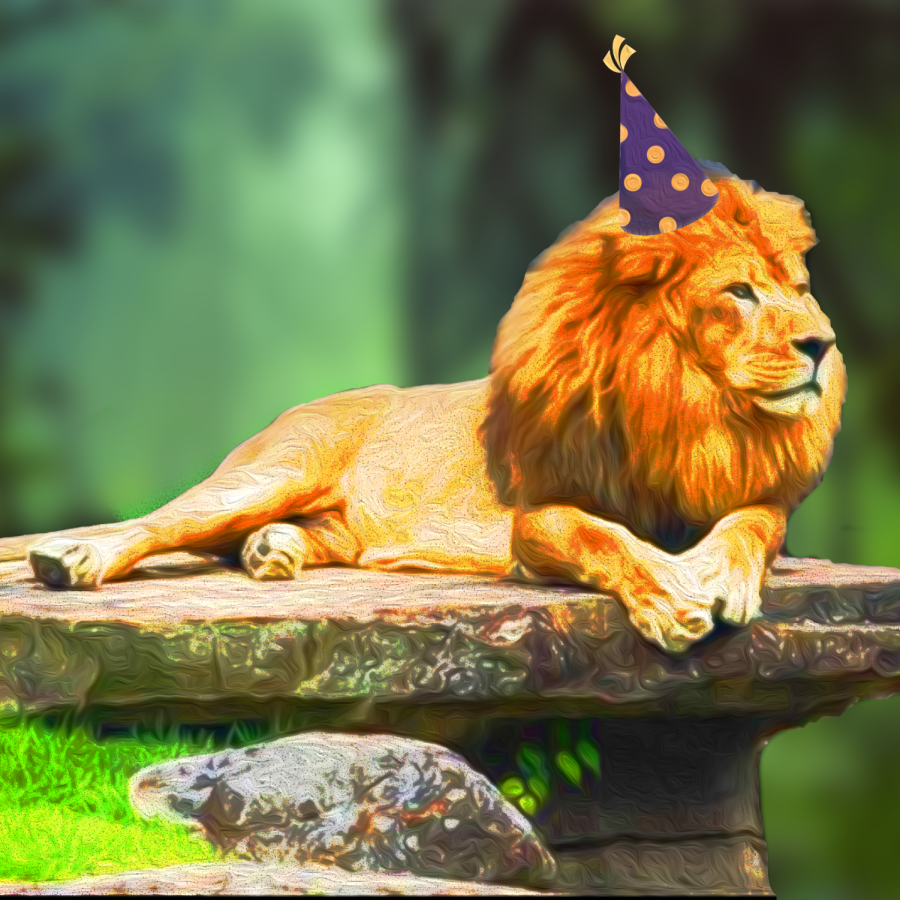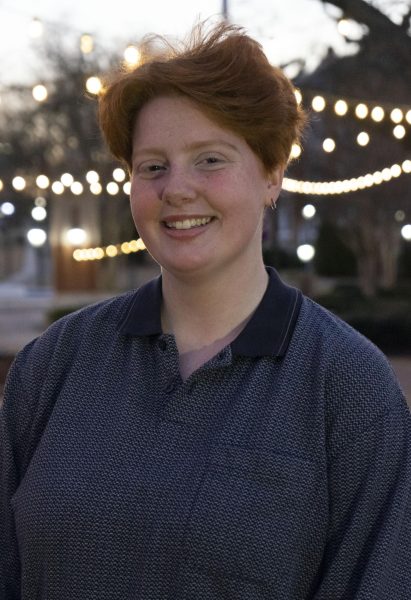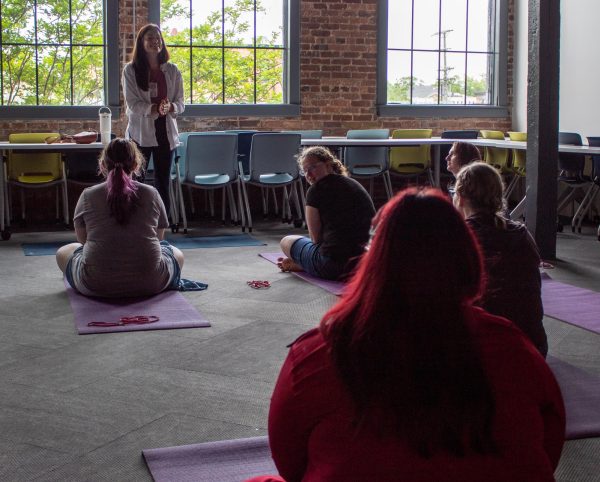University celebrates Leo III’s 20th birthday
November 17, 2022
On Nov. 18, the University of North Alabama will celebrate the 20th birthday of Leo III, the school’s beloved lion.
UNA’s legacy of live lions began on July 22, 1974, when the original Leo I was brought to campus. Former university president Dr. Robert M. Guillot acquired the cub from a wildlife refuge in Knoxville, Tennessee. Since then, Leo has spent the rest of his life serving as a symbol of school pride.
After Leo I passed away on Jan. 20, 1988, the university and the surrounding community poured out support for another live lion to adopted by UNA, and thus Leo II was brought to the campus.
Leo II lived in the original habitat that housed Leo I. During his time there, Leo II was named the nation’s “Second Best Mascot” by Sports Illustrated in 1997. On March 2, 2000, he passed away.
After over two years of not having a live lion on campus, the university made plans to acquire a new big cat. Construction of a new habitat began in 2002. It was named after George H. Carroll because of his love of the lions and his philanthropy that helped keep them well cared for.
On Nov. 18, 2002, Leo III and Una were born at Greenville Wildlife Park in Greenville, New Hampshire. Dr. Dan Howard, then vice president of the university, and his wife, Anne Howard, acquired the cubs when they were just 6 weeks old and brought them home to stay with them until they were able to live at the new George H. Carroll Lion Habitat.
Before bringing the duo to UNA, Dr. and Mrs. Howard made sure both Leo III and Una were in good health by having them examined by Dr. Matthew Connolly, owner of Connolly Animal Clinic. After arriving at the university, Connolly continued his care for Leo III and Una, and still cares for Leo today, even after the tragedy of Una’s passing on June 30, 2020. He provides all care for UNA without charge, as he believes that the opportunity to get to care for Leo is payment enough.
“When [Leo III] was a cub, we were responsible for his general care, just like with a kitten,” said Connolly. “He had a couple of times where he had some bowel issues. I’m one of the few people who can probably say they gave a lion an enema and lived to tell about it, but you don’t mention the fact that he was nine weeks old and wasn’t all that dangerous. We took care of his general care then and made sure they were vaccinated and getting the care they needed. It’s really interesting because their physiology is really just like a house cat. You’re checking for the same disease processes that you have in a house cat, but on a 500-pound house cat.”
Connolly visits Leo twice a year for check-ups. Physical exams and bloodwork are standard, as it is important to check for early signs of any issues that could occur.
Other than Connolly, Leo III’s care team consists of Dr. Brandon Fisher and a rotating cycle of people who make up an everyday care team at the habitat. Leo has grown to know those who care for him over the years.
“After probably two or three years of getting vaccinated and stuff, because pretty much the only time he would see the veterinarians was when he was getting vaccinated, he really learned that if we were down there, something was fixing to happen, and he wasn’t really happy about that,” said Connolly. “He’s really kind of mischievous. I remember a couple times, when we would stand between the two fences, he would walk by and casually reach a paw under the fence, trying to sweep [our] legs out from under [us]. His mental acuity is still doing well. He knows when I go down there, and he’s a little more reluctant to go to his cage. If he even senses we’ve been anywhere near there, he knows what’s going on.”
Leo is closer to the caretakers he sees on a regular basis, though he is still stubborn when he wants to be Connolly said. After all, how does one make a 500-pound house cat do something that they do not want to do?
According to Connolly, Leo III is, like most animals, routine-based. His care team works to keep his days systematically ordered, so he is as comfortable as possible. This routine includes regular health checks and entering his various cages so that he is used to them when veterinarian visits occur.
The top-quality care that Leo receives is a key factor in his health at such a mature age.
“I’m really glad he’s in as good of shape as he’s in to be twenty years old,” said Connolly. “The average life expectancy of a lion in captivity is around 20 years old, so he will at least make that average and probably exceed it. I think it’s a real testament to UNA and the quality of care they’ve been able to give him to get that far. Any time they’ve had any kind of health questions, they’ve come and asked, and we’ve been able to go down and evaluate what’s going on. USDA also shows up shows up unannounced to inspect the place, and I don’t know how many zoos or one-exhibit zoos can say this – Lord knows restaurants can’t say this – but they’ve never gotten less than 100% on any inspection they’ve ever had. That’s not an easy number to get. They have done an amazing job to be able to say that, and the quality of care has also contributed to Leo’s longevity.”
Those on campus, whether working, living or visiting, have found great joy in Leo III’s presence over the years. Michelle Eubanks, university media and public relations director, feels that having a live lion on campus adds to what makes UNA so special.
“I loved how, when I would give tours as a student, as a Lagrange member, but also even now when people come to campus, it’s a surprise,” said Eubanks. “‘You mean you have a what?’ Then, to hear him roar. It becomes sort of a soundtrack to being on campus at certain times of day. I think that’s what makes campus so unique. Literally no other campus in this country can say anything remotely like that.”
In addition to this, Leo plays a role in keeping university traditions alive. University President Dr. Kenneth Kitts, who gets to experience living next to a live lion, is especially proud of Leo and the constant joy he brings UNA.
“Leo III is a part of my daily life, and he has been since Dena, I and the boys moved onto campus in 2015,” said Kitts. “We have always said we have the coolest neighbor ever, and I often hear his roar from my office in Cramer Way or while I am teaching in that building. As UNA achieves new hallmarks of excellence – from having more than 10,000 students enrolled to being a full NCAA Division I institution – having Leo III on campus provides an additional point of pride.”
Because Leo III’s care is entirely funded by the community, UNA will be hosting a private donor event in celebration of Leo III’s “roaring into his twenties.” It is by invitation only, as it is for those who contribute the most to his care financially.
However, outside donations are welcome. From the lion buckets that are passed around at football games to information at the habitat on how to donate via the website, there are many opportunities for those on-campus and off to participate in the care of Leo.
To celebrate the university’s favorite big cat, students, faculty and visitors are encouraged to stop by for a visit and give warm wishes to Leo on his special day.
Happy birthday, Leo!
For more information about Leo III, Una, and previous Leos, go to leoanduna.com to view pictures, a timeline of the lions’ lives, donation information and a 24/7 live Lion Cam. There are also free informational booklets for children and adults available at the George H. Carroll Lion Habitat.
ting vaccinated and stuff, because pretty much the only time he would see the veterinarians was when he was getting vaccinated, he really learned that if we were down there, something was fixing to happen, and he wasn’t really happy about that,” said Connolly. “He’s really kind of mischievous. I remember a couple times, when we would stand between the two fences, he would walk by and casually reach a paw under the fence, trying to sweep [our] legs out from under [us]. His mental acuity is still doing well. He knows when I go down there, and he’s a little more reluctant to go to his cage. If he even senses we’ve been anywhere near there, he knows what’s going on.”
Leo is closer to the caretakers he sees on a regular basis, though he is still stubborn when he wants to be Connolly said. After all, how does one make a 500-pound house cat do something that they do not want to do?
According to Connolly, Leo III is, like most animals, routine-based. His care team works to keep his days systematically ordered, so he is as comfortable as possible. This routine includes regular health checks and entering his various cages so that he is used to them when veterinarian visits occur.
The top-quality care that Leo receives is a key factor in his health at such a mature age.
“I’m really glad he’s in as good of shape as he’s in to be twenty years old,” said Connolly. “The average life expectancy of a lion in captivity is around 20 years old, so he will at least make that average and probably exceed it. I think it’s a real testament to UNA and the quality of care they’ve been able to give him to get that far. Any time they’ve had any kind of health questions, they’ve come and asked, and we’ve been able to go down and evaluate what’s going on. USDA also shows up shows up unannounced to inspect the place, and I don’t know how many zoos or one-exhibit zoos can say this – Lord knows restaurants can’t say this – but they’ve never gotten less than 100% on any inspection they’ve ever had. That’s not an easy number to get. They have done an amazing job to be able to say that, and the quality of care has also contributed to Leo’s longevity.”
Those on campus, whether working, living or visiting, have found great joy in Leo III’s presence over the years. Michelle Eubanks, university media and public relations director, feels that having a live lion on campus adds to what makes UNA so special.
“I loved how, when I would give tours as a student, as a Lagrange member, but also even now when people come to campus, it’s a surprise,” said Eubanks. “‘You mean you have a what?’ Then, to hear him roar. It becomes sort of a soundtrack to being on campus at certain times of day. I think that’s what makes campus so unique. Literally no other campus in this country can say anything remotely like that.”
In addition to this, Leo plays a role in keeping university traditions alive. University President Dr. Kenneth Kitts, who gets to experience living next to a live lion, is especially proud of Leo and the constant joy he brings UNA.
“Leo III is a part of my daily life, and he has been since Dena, I and the boys moved onto campus in 2015,” said Kitts. “We have always said we have the coolest neighbor ever, and I often hear his roar from my office in Cramer Way or while I am teaching in that building. As UNA achieves new hallmarks of excellence – from having more than 10,000 students enrolled to being a full NCAA Division I institution – having Leo III on campus provides an additional point of pride.”
Because Leo III’s care is entirely funded by the community, UNA will be hosting a private donor event in celebration of Leo III’s “roaring into his twenties.” It is by invitation only, as it is for those who contribute the most to his care financially.
However, outside donations are welcome. From the lion buckets that are passed around at football games to information at the habitat on how to donate via the website, there are many opportunities for those on-campus and off to participate in the care of Leo.
To celebrate the university’s favorite big cat, students, faculty and visitors are encouraged to stop by for a visit and give warm wishes to Leo on his special day.
Happy birthday, Leo!
For more information about Leo III, Una, and previous Leos, go to leoanduna.com to view pictures, a timeline of the lions’ lives, donation information and a 24/7 live Lion Cam. There are also free informational booklets for children and adults available at the George H. Carroll Lion Habitat.












